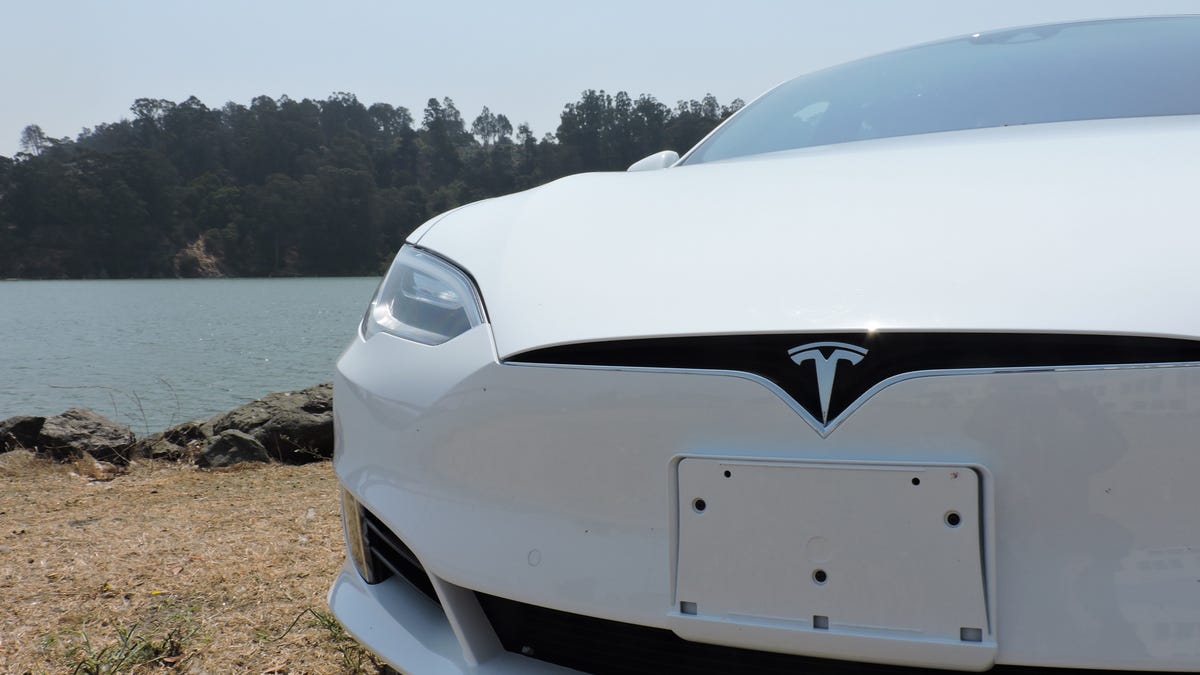Your Tesla might become more expensive to insure
At least one insurance company has raised rates on the automaker's electric cars, citing a higher-than-average claim frequency.

If you're shopping for insurance for your new Tesla , you might want to avoid a specific AAA club for the time being.
The Auto Club Group, the second largest AAA club in North America according to its website, is raising its rates for the Tesla Model S hatchback and the Tesla Model X crossover, Automotive News reports. The insurer cites both high claim frequencies and high claim costs when compared with other vehicles in their respective segments.
Basing its decision on data from multiple sources, including the nonprofit Highway Loss Data Institute (HLDI), The Auto Club Group predicts insurance rates for Tesla electric vehicles could rise as much as 30 percent. HLDI's data claims that the Model S has 46 percent more claims than the segment average, with repairs costing more than twice the average, while the Model X has a 41 percent above-average claim rate with repair costs 89 percent higher than average.
It'll be interesting to see how this affects the Model 3, once that makes its way to production.
AAA did not immediately return a request for comment.
Tesla obviously disagrees with this decision. "This analysis is severely flawed and is not reflective of reality," a Tesla spokesperson said in a statement. "Among other things, it compares Model S and X to cars that are not remotely peers, including even a Volvo station wagon." The Model S is lumped into the large luxury vehicle segment, which includes the Volvo XC70 and Mercedes-Benz E-Class. The automaker's full statement can be found at the bottom of this article.
Tesla has a program called Insure My Tesla, which works directly with insurers to bring premiums down, based on Tesla's high federal crash-test scores and the benefits that come with its semiautonomous Autopilot system, which the automaker believes can go a long way to reducing collisions.
One solution for owners who don't want to be forced to pay more for Tesla insurance, as Automotive News points out, could be a usage-based insurance solution. Startups and stalwarts alike are starting to offer insurance programs that reward drivers for good behavior, which is monitored by way of an OBDII dongle that measures acceleration and braking figures, among other data points.
Given the growing number of vehicles with smart safety features such as autonomous emergency braking and adaptive cruise control, insurance companies may eventually start lowering premiums for cars featuring this technology, once data proves the efficacy of these systems in preventing collisions. For now, though, it would be wise for Tesla owners -- or everybody, really -- to do their due diligence when shopping for car insurance.
Here is Tesla's full statement:
This analysis is severely flawed and is not reflective of reality. Among other things, it compares Model S and X to cars that are not remotely peers, including even a Volvo station wagon. Model S has the fastest 0 to 60 mph time of any production car ever tested by Motor Trend, and Model X has by far the best acceleration of any SUV. Obviously, it is false and misleading to compare them to a station wagon without explaining this discrepancy.
As part of the Insure My Tesla program, Tesla is working with leading insurers resulting in lower prices for Tesla insurance, not higher. These leading insurers also appreciate the added safety benefit of Autopilot, which NHTSA found to reduce accident rates by 40 percent.
Model S continues to own the record for the lowest likelihood of injury for any car ever tested by NHTSA, and we expect Model X to receive the best score for any SUV ever tested.
Update, June 8: Clarified that a single AAA club is raising rates, unrelated to the AAA head office.

